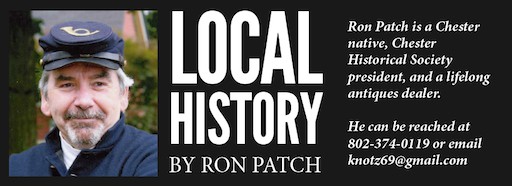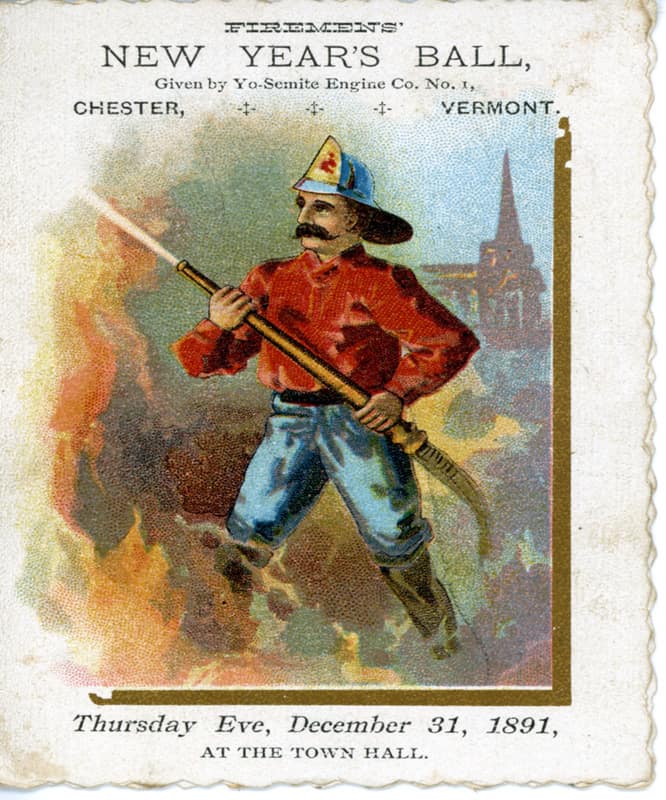
Here in the country, dances were our entertainment from the mid-1800s well into the 1900s. In those days most every fraternal organization held dances. Fire departments, Masons, Odd Fellows, and others held dances.
Many rural families played music together. Mom on the piano and Dad on guitar was common. Kids sang with some playing an instrument. Sometimes neighbors would get together on a Saturday evening for a neighborly shindig. In years gone by I have talked with many old timers about these days.
When I was young, my father would play the guitar and sing for us. I remember him playing and singing, “Old Dan Tucker.” I always figured he learned it in the CCC camp. Arnold was very entertaining. My sister Cheryl took up the guitar. Her singing left much to be desired.

Dance cards
Dance cards are an interesting bit of ephemera to collect. The photo with this article is a Yo-Semite dance card in the collection of Chester Historical Society.
Young ladies of the day were given a dance card when they entered the hall. They are single fold cards of a heavier paper. Printed on the cover is the organization that sponsored the dance. The dance card with this article is for a New Year’s Ball at Town Hall.
The cover reads at the top: “FIREMENS’ NEW YEAR’S BALL, Given by Yo-Semite Engine Co. No. 1 Chester Vermont.”
The bottom reads: “Thursday Eve, December 31, 1891, AT THE TOWN HALL.”
When you open this dance card on the left inside cover are numbered lines from one to 18. A young lady kept the dance card as a record of who she danced with on this particular evening.
Some ladies were more popular than others. Every line in the popular lady’s dance card was a different suitor. On the inside right cover was the orchestra playing that evening. These were often guitars, banjos, fiddles, and piano. Music was very important in the days before radio and television.
In the upper left corner of a dance card was a small hole, maybe an eighth of an inch in diameter. There was a string that passed through the hole. Attached to the string was a very short pencil. Ladies used this pencil to record with whom they danced. At the historical society, we have a couple dance cards that still have the string and pencil.
Last summer when we were working assembling histories for our book, “History of Chester’s Fire Departments,” I asked those working to keep an eye out for this dance card. I had seen it before and wanted it for the cover of the book.
Day after day went by but the dance card wasn’t found. Other dance cards were located but they were black and white, not color. Well one day this dance card appeared at my station under a pile of paper I was working on. I think Peter had a good chuckle.
“Anyhoo,” as my mother used to say, Tom Hildreth took the card to scan. For the cover I didn’t want the printed information you see here. Tom cropped it to just the image. The hole at top left Tom filled in. Fear not. A couple pages in the book I have this dance card reproduced as you see it here.
Dance cards vary in size but would be approximately four inches by three inches. I thought this card would make an eye-catching cover. Sitting on a shelf in a store, this book will stand out.
It’s a great portrayal of a late 19th-century fireman. The fireman holds a long brass nozzle. We have one of these nozzles in our collection. It will be in our book along with dozens of other fire-fighting artifacts we have.
Right now, I’m planning to take eight or ten pages in the middle of the book and insert photos of these artifacts. Tom Hildreth, who photographed the artifacts, commented that he knew color photos would increase our cost but he thought some were worthy of the expense. So it will be.
I can picture an orchestra on the stage at Town Hall playing to a large crowd. I remember when Alumni dances were held at Town Hall. Remember John Stearns?
Check YouTube for “Old Dan Tucker” by Bruce Springsteen. I enjoyed hearing it again.
This week’s old saying is from Lee Decatur: “My dad always said that a man who knew where to find what he needed was smarter than the man whose head was full of facts.”